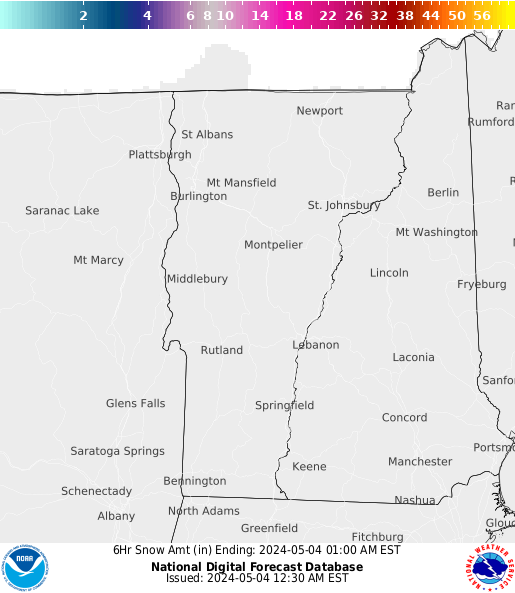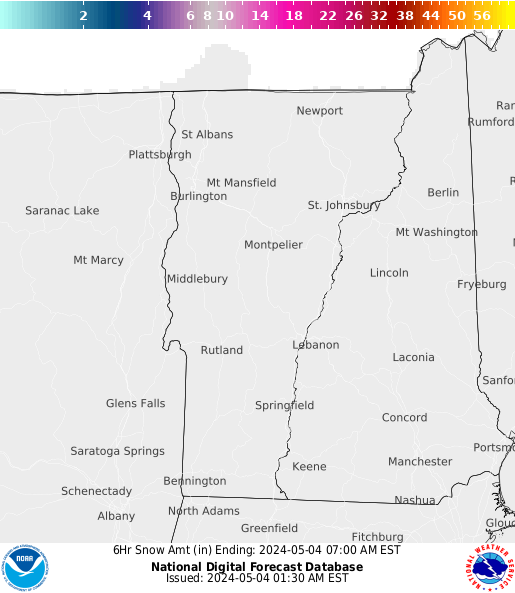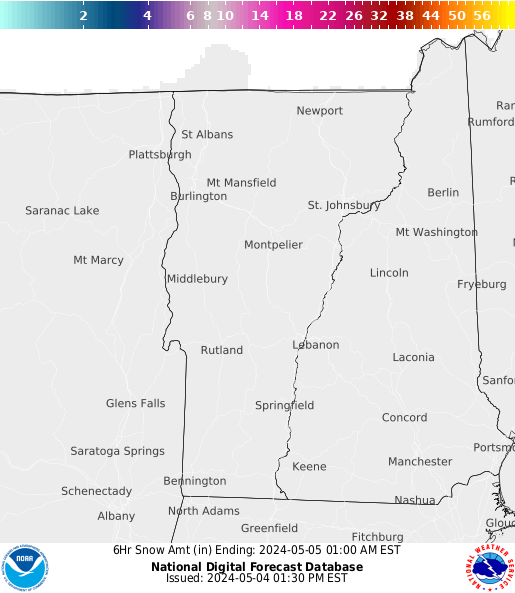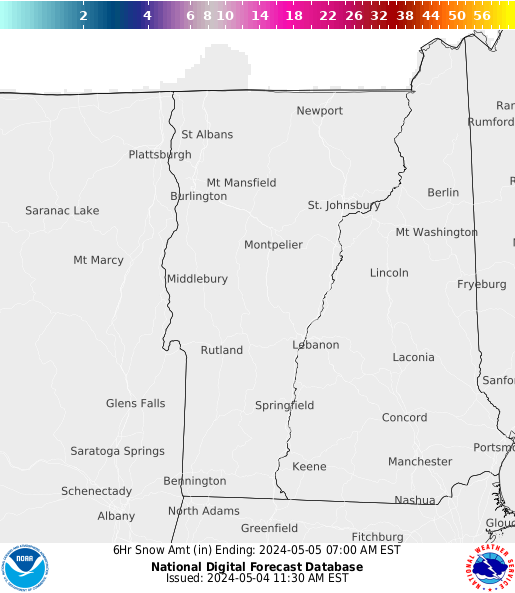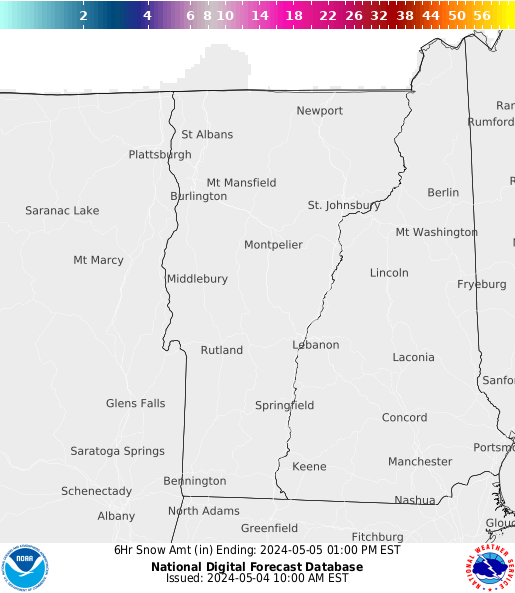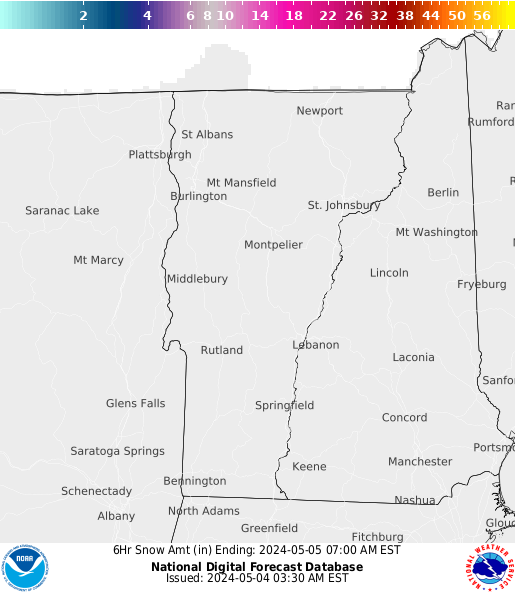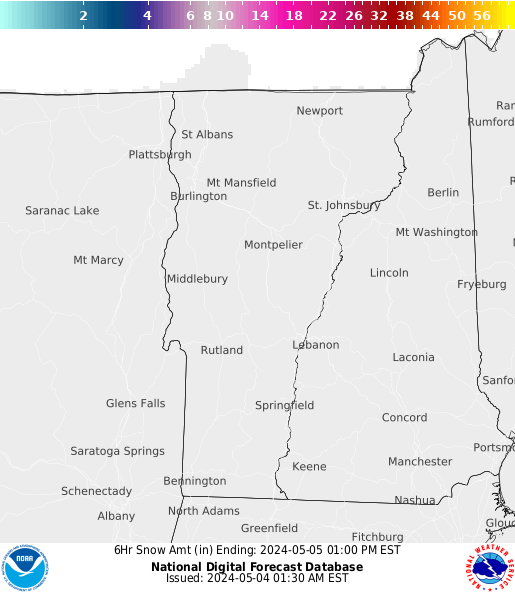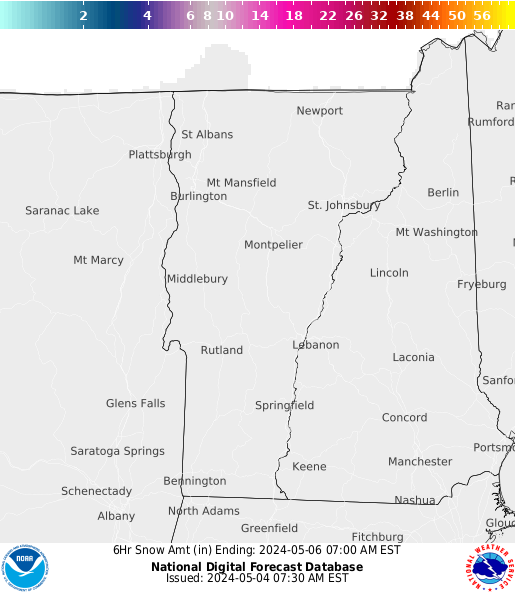The Wednesday/Thursday weather map wouldn't appear ideal for snowfall at first glance, but we are enjoying a special kind of early December winter weather run and we appear in line to make the most of this event. Low pressure will track over Lake Ontario midday Wednesday and then head close to the Canadian border. This position can leave us on the short side of accumulating snowfall and it certainly isn't optimal in this case. That said, southwesterly flow does not appear to be as well defined as it did a few days ago and models are indicating a decent enough plume of moisture over most of the state. Though temperatures will approach or even exceed the freezing mark in low lying areas Wednesday, temperatures across the high country and certainly ski country will support a more powdery snowfall beginning around 9 am Wednesday and continuing in occasional bursts throughout the day. As the upper air support associated with this feature moves closer to Vermont Wednesday night, the snow intensity should become even more elevation sensitive and certainly capable of producing 5-10 inches of snow by Thursday morning at MRG, half of which occurs during the day Wednesday and half the ensuing night. Expect a lesser 3-5 inch wetter snow in valley locations.
Better also is the support for more snow showers as the day progresses Thursday. The support for this looks sensational closer to Jay Peak, and we should see some additional accumulation in our region as well with 2-4 inches, most of which falls in the later part of the day as the flow becomes more favorable. We can expect some gusty winds both Wednesday and Thursday with Thursday featuring the colder temperatures and wind chills. Temperatures on Thursday are likely to settle in the teens before dropping into the single digits Friday. I think we are in line for some sunshine to conclude the week thanks to a weaker storm system consolidating clouds and some snow well to our south.
The upcoming mid-December weekend continues to look wintry with some early sunshine Saturday giving way to clouds. Another buckling of the polar jet is expected to bring both a surge of colder weather and a chance for some snow. Models had been teasing the idea of a bigger storm and although this still appears somewhat possible further south, a lighter snow is more likely over the state of Vermont late Saturday night into early Sunday followed by a blustery and cold weekend conclusion. What a remarkable cold start it has been for all of New England. Early season cold has been very difficult to produce here since the coldest arctic air is required to squeeze through so many open bodies of water that have yet to freeze. We manage to pull it off however and on target to finish the first half of the month at more than 10 below the 30 year average. The second half is not expected to be nearly as chilly with arctic air shifting its focus on western North America. I continue to believe the milder intrusions will be short-lived in New England and longer in duration south of us. Some warm advection snow is possible Tuesday ahead of the first push of milder temperatures and there should be additional chances for winter weather as come colder temperatures make a return around Winter Solstice weekend.





